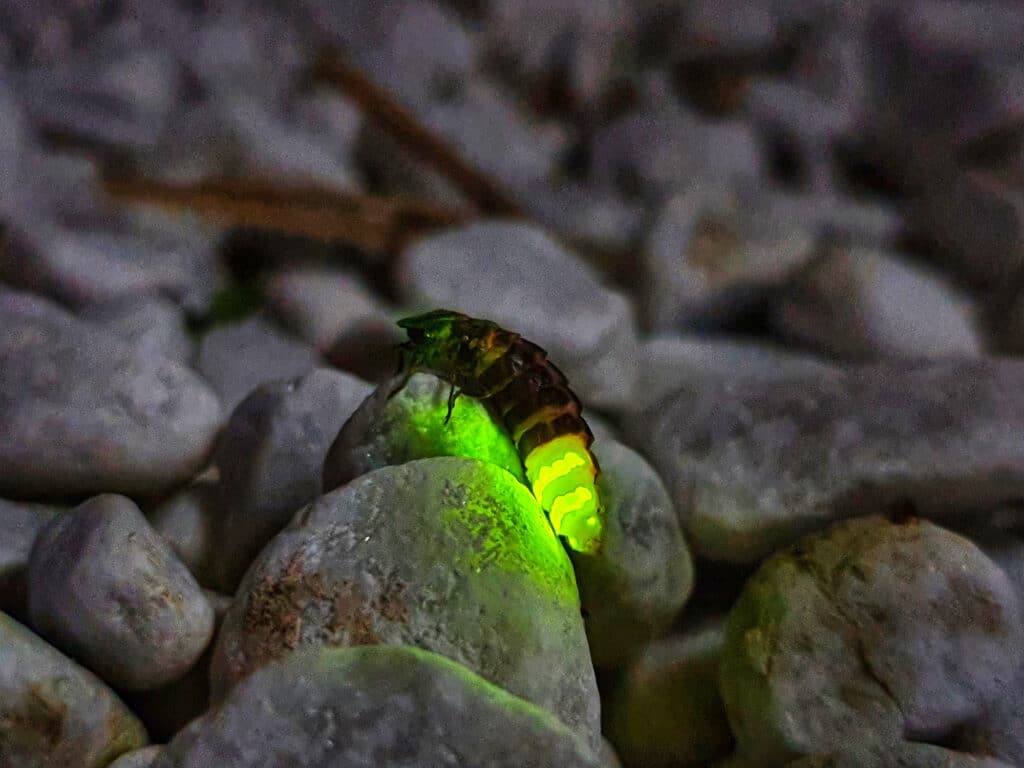
Firefly Pest Identification Guide
Quick Facts About Firefly Pests
Fireflies are actually beetles belonging to the Lampyridae family, known for their bioluminescent qualities that light up Tennessee summer evenings. Despite their beauty, they can sometimes indicate conditions that attract more problematic pests to your property.
- Size: 0.5 to 1 inch in length
- Color: Black with reddish or yellowish markings
- Shape: Elongated, flattened beetle body
- Active Season: Late spring through summer (May-August)
- Lifespan: 1-2 years total (most spent as larvae)
- Reproduction Rate: One generation per year

What Do Firefly Pests Look Like?
Firefly pests have elongated, somewhat flattened bodies typical of beetles. Their most distinctive feature is the light-producing organ located on their abdomen that creates a “cold light” during twilight hours. Adult fireflies have soft, leathery wing covers (elytra) that may be black, brown, or gray with yellow, red, or orange markings depending on the species. Their heads are usually concealed from above by a shield-like structure called the pronotum.Key Identifying Features
- Bioluminescent Abdomen: The most recognizable feature is their ability to produce light from special organs on their lower abdomen.
- Flashing Patterns: Each firefly species has a unique flashing pattern they use to attract mates.
- Synchronization: Some Tennessee firefly populations, particularly near Elkmont, display synchronous flashing where large groups blink in unison.
- Nocturnal Activity: Fireflies are primarily active at dusk and during the night, when their light displays are most visible.
Related Species
Lightning bugs and glowworms are common names for the same insect family (Lampyridae). Some firefly species don’t produce light at all as adults. Unlike true firefly pests, click beetles (Pyrophorini tribe) can also produce light but have a distinctive clicking mechanism and different body shape. While fireflies themselves aren’t harmful, their preferred habitats—moist, grassy areas with low light pollution—can attract other pests like mosquitoes and cockroaches.
Health & Property Risks
Health Concerns
Firefly pests pose virtually no health risks to humans or pets, making them one of the few insects that are generally welcome around homes.
- Non-Toxic: Fireflies are not poisonous or venomous to humans.
- No Disease Transmission: They are not known to carry or transmit diseases.
- No Biting: Fireflies do not bite humans or pets.
Property Damage
Fireflies cause essentially no property damage, unlike many other insects that may infest homes.
- No Structural Damage: Fireflies don’t bore into wood or damage home structures.
- No Food Contamination: They don’t infest pantries or contaminate food sources.
- No Garden Damage: Adult fireflies typically feed on nectar or pollen, not garden plants.

Where to Look for Firefly Pests in Your Home
Firefly pests rarely enter homes but are commonly found in yards and gardens. Look for their distinctive flashing lights in grassy areas, near the edges of woods, or around water features during summer evenings, especially in areas with minimal artificial lighting.
When to Call Professional Help
While fireflies themselves don’t require professional pest control, their preferred habitats can attract more problematic pests. If you notice an increase in mosquitoes, cockroaches, or other unwanted insects in areas where fireflies are present, professional pest management may be needed. Additionally, if you want to create an environment that supports fireflies while deterring other pests, expert guidance can help strike the right balance between conservation and pest prevention.

